I love photography and the impact of image orientation. Whether it’s a stunning landscape or a classic portrait, the choice matters. We’ll look into the benefits of each, and how to pick the right one for your vision.
Choosing between portrait and landscape is more than a personal taste. It’s a key decision that affects how your photos are seen and felt. Each style has its own strengths, suited for different subjects and ways of viewing. Knowing these differences helps you make better choices and create images that grab attention.
Table of Contents
Understanding Image Orientation Basics
Visual composition is greatly affected by an image’s format. This can change how it looks and tells its story. There are mainly two types: portrait and landscape.
Defining Orientation Types
Portrait images are taller, focusing on vertical details. Landscape images are wider, showing broader scenes.
The Role of Aspect Ratios
Aspect ratio shows an image’s width to height, like 2:3 or 16:9. Knowing this is key for framing and fitting images in layout designs.
Common ratios include 1:1 (square), 16:9 (widescreen), and 2:3 (traditional camera format). The right ratio can make your images more impactful.
Impact on Visual Composition
An image’s orientation affects its composition and viewer engagement. Portraits pull the eye up, focusing on details. Landscapes, however, expand the scene, encouraging exploration.
Grasping image orientation and aspect ratio is vital for creating engaging images. These images will connect with your audience.

Portrait vs Landscape: Key Differences and Applications
Choosing between portrait and landscape affects how we see images. Portrait is great for showing people, animals, or small objects up close. It’s perfect for headshots, busts, and vertical designs like posters or phone wallpapers.
Landscape is better for wide scenes, like landscapes, cityscapes, or groups. It lets you capture more than what the camera sees. The right choice depends on the subject, where it will be seen, and the mood you want to share.
| Portrait Orientation | Landscape Orientation |
|---|---|
| Ideal for vertically-oriented subjects like people, animals, or detailed objects | Best for capturing wide scenes, landscapes, cityscapes, or groups of people |
| Creates an intimate and detailed perspective | Maximizes the width of the frame |
| Suitable for headshots, busts, and vertical designs | Suitable for creating scenes larger than the camera’s field of view |
Deciding between portrait and landscape depends on your project’s needs. Knowing when to use each can make your visuals more impactful and effective.

“The choice between portrait and landscape ultimately depends on the subject’s shape, the viewing medium, and the desired mood or atmosphere you wish to convey.”
The Power of Portrait Orientation
The portrait 0rientation is a strong tool in visual composition. It offers a unique view that can make your images more impactful. This makes it great for many different situations.
Advantages of Vertical Composition
The portrait 0rientation is perfect for capturing tall subjects like portraits and full-length shots. It lets you show your subjects fully without needing to crop. This gives your images a formal and elegant look, ideal for big events like weddings and graduations.
Best Scenarios for Portrait Format
- Individual portraits and headshots
- Full-length and environmental portraits
- Weddings, graduations, and other formal events
- Product photography for tall or narrow items
- Vertical landscapes and architectural compositions
Common Portrait Size Ratios
| Aspect Ratio | Dimensions (inches) |
|---|---|
| 8.5:11 | 8.5 x 11 |
| 3:4 | 9 x 12 |
| 2:3 | 11 x 14 |
The portrait format is easy to store and carry, like most books. But, it can be tricky for landscape scenes. The vertical shape might mess with how your eye moves across the image.
Knowing when to use the portrait 0rientation can help you make stunning images. These images will grab your audience’s attention and leave a lasting impression.
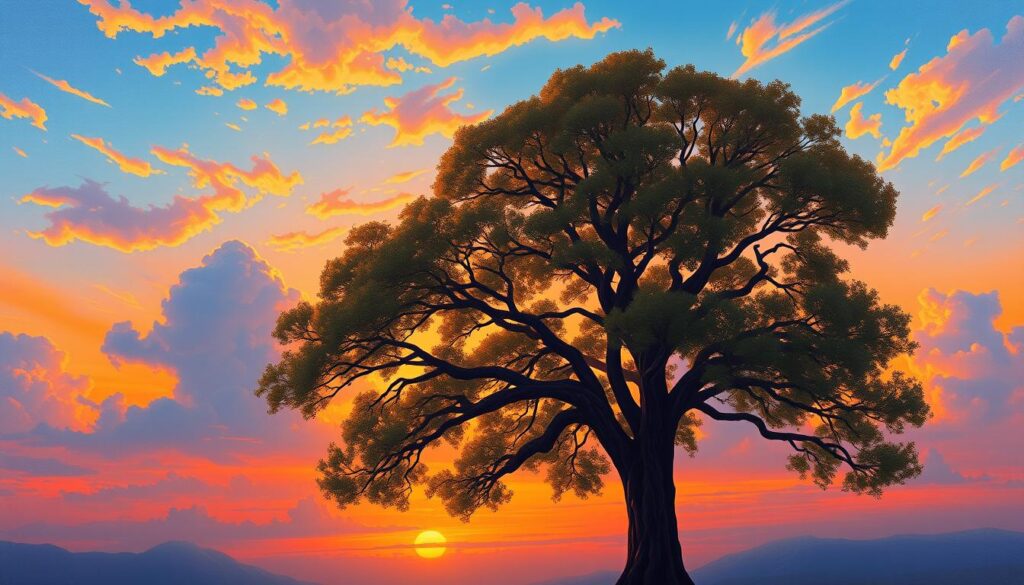
Benefits of Landscape Orientation
The landscape format has many advantages in visual composition. It allows for a natural flow of the eye, making it great for storytelling. This 0rientation is also perfect for wide shots and group photos, offering a deeper experience.
It’s especially good for environmental portraits. The wider frame captures the subject with their surroundings. Common sizes include 11×8.5 inches, 12×9 inches, and 13×10 inches, giving plenty of room for creative shots.
However, landscape albums can be bulkier and harder to store than portrait ones. They might also put more strain on the album’s spine, affecting its durability. Still, the benefits of landscape 0rientation usually make it a top choice for many uses.
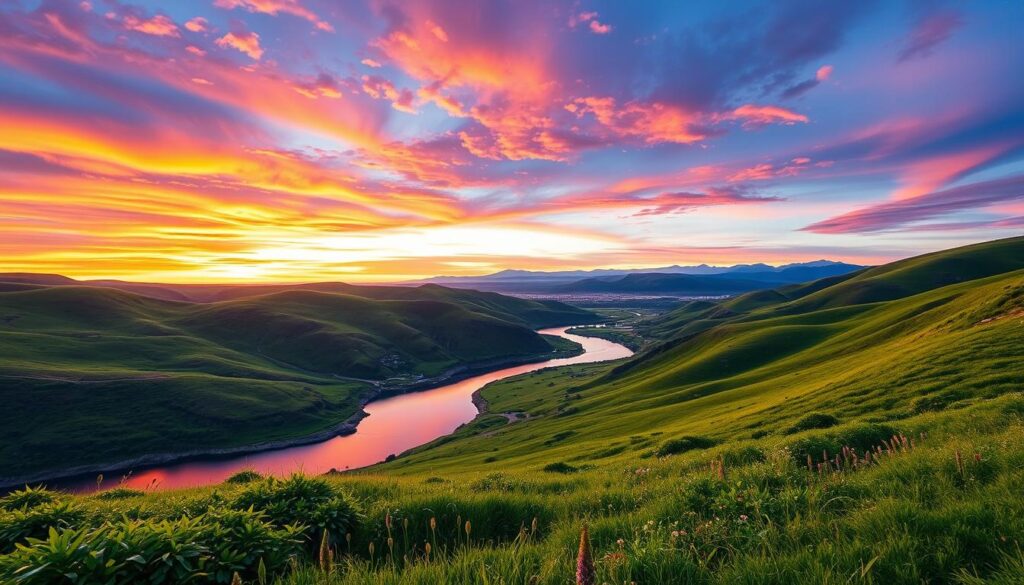
“The landscape format allows for a natural flow of the eye, guiding the viewer through the visual narrative in a seamless and engaging manner.”
Natural Eye Movement and Visual Flow
The way an image is oriented can greatly affect how we see it. Landscape images fit well with our natural reading habits. This makes the story in the image flow smoothly.
Portrait images, however, can make our eyes move in a zigzag pattern. This can mess up the flow and make it hard to follow the story. So, choosing the right orientation is key to keeping viewers engaged.
Left to Right Reading Patterns
Most of us are used to reading from left to right. This habit also applies to how we look at images. Landscape images follow this natural path, making it easier for us to follow the story.
Impact on Storytelling
Landscape images help tell stories better because they follow our natural reading pattern. This makes the story flow well and keeps us interested. It’s especially good for showing a series of images or a multi-panel layout.
Viewer Engagement Factors
The orientation of images can also affect how much we engage with them. Landscape images keep our attention better, making the content more memorable. This can also help us feel more connected to what we’re seeing.
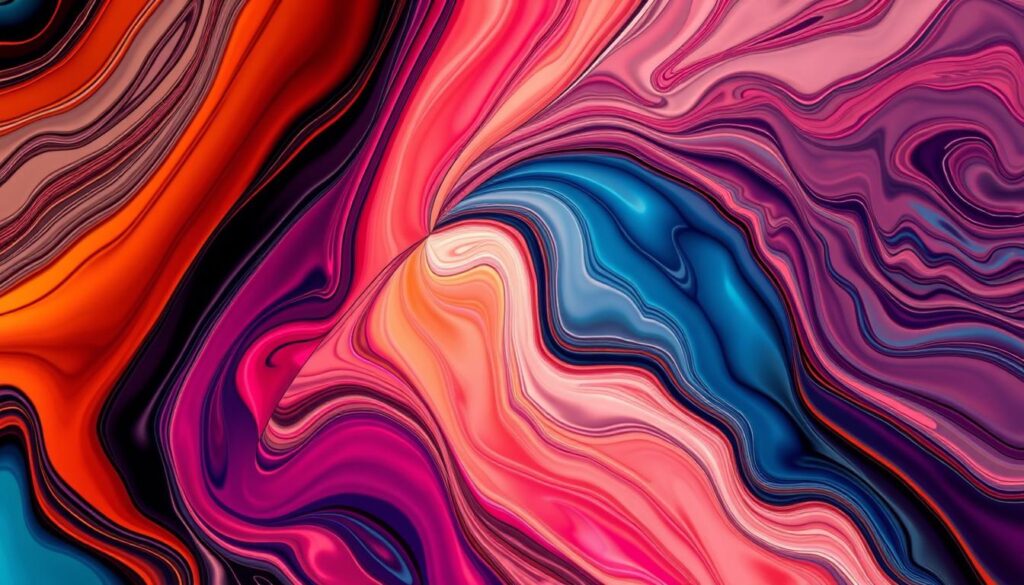
Choosing Orientation for Digital Platforms
Choosing between portrait or landscape 0rientation is key for digital content. With mobile devices and social media on the rise, it’s important to know what works best. This ensures your content grabs the viewer’s attention.
Landscape is great for widescreen displays like desktops and big tablets. It fits the screen’s natural shape, offering a better viewing experience. This is especially true for videos and presentations.
Portrait is better for mobile devices, where most content is viewed. Over 75% of all videos are played on mobile devices. This makes mobile optimization crucial for social media videos. Platforms like Snapchat and TikTok prefer vertical videos, with vertical videos reported to have a 90% completion rate compared to horizontal videos.
For social media, knowing each platform’s aspect ratio is vital. For example, 9:16 aspect ratio is the most widely used for vertical formats on Snapchat and TikTok. Instagram and Facebook Stories also favor this ratio. The 4:5 aspect ratio is used in Instagram posts for a slightly less tall but still vertical look.
Tools like Adobe Premiere Pro, InShot, and Kapwing make creating vertical videos easy. They help you tailor your content to your audience’s preferences. This boosts engagement and improves the viewer’s experience.
“Specific social media platforms like Instagram Stories, TikTok, and Snapchat have adopted vertical formats to offer an immersive and engaging viewing experience.”
In conclusion, consider the device and platform when selecting your content’s format. Aligning with audience preferences ensures a stronger impact.
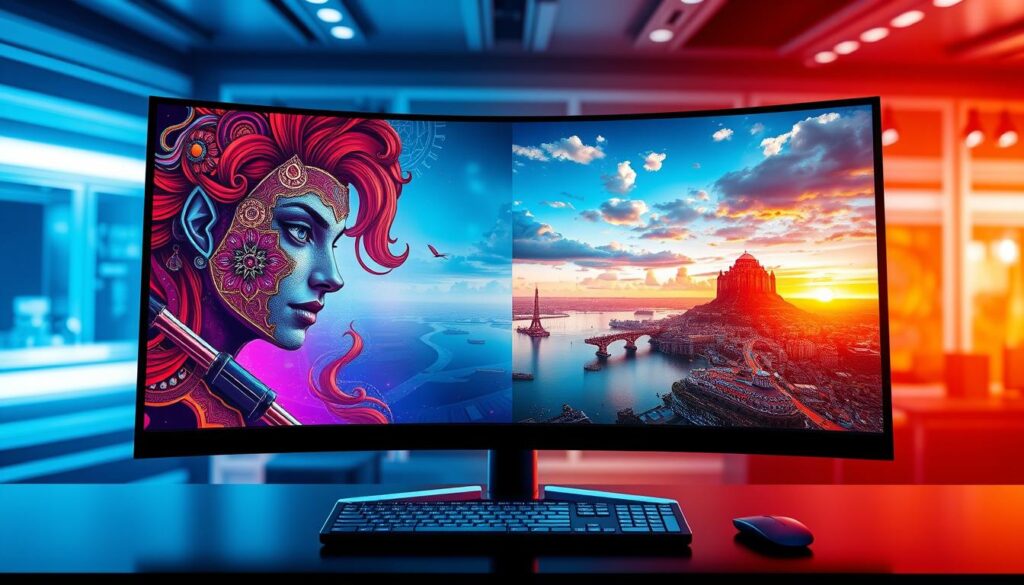
Professional Photography Considerations
Choosing the right format for photography depends on the type of photo and its use. Photographers need to think about what works best for their area of work.
Wedding and Event Photography
In wedding and event photography, landscape shots are often preferred. They let photographers capture more, from big venue views to close-up couple photos. This style fits well with the storytelling of wedding albums.
Commercial Photography Requirements
Commercial photography requires a careful look at image 0rientation. The photographer must match the client’s needs, whether for ads, product photos, or articles. It’s key to talk clearly with clients to make sure the photos are what they want.
Portfolio Presentation Tips
For a photography portfolio, mixing portrait and landscape shots is good. But, keep the same style within each project for a smooth look. Think about how your portfolio will be seen, online or in print, to pick the best images and layout.
| Photography Genre | 0rientation Preference |
|---|---|
| Wedding and Event | Landscape |
| Commercial | Varied, based on client requirements |
| Portfolio Presentation | Mix of portrait and landscape, with consistency within projects |
For all types of photography, knowing how your photos will be used is key. It affects the choices you make when taking and showing your photos.
Print Media and Display Options
The way you position your images can greatly affect your print media and display choices. Landscape prints are perfect for wall art in living rooms or above furniture. On the other hand, portrait format is better for narrow wall spaces or vertical displays. It’s also important to think about your ceiling height when picking print sizes and formats.
The two-thirds rule is a helpful guideline for sizing prints. It says landscape prints should cover about two-thirds of the wall or furniture width. For example, a 90-inch wide wall would be best with a 60-inch wide landscape print (90 x 2/3 = 60).
Using painter’s tape is a great way to see how different print sizes look on your walls before buying. It lets you try out various options and make sure they fit well in your space.
| 0rientation | Best Scenarios | Ideal Print Sizing |
|---|---|---|
| Landscape | Living rooms, above furniture | Approximately 2/3 the width of the wall or furniture piece |
| Portrait | Narrow wall spaces, vertical displays | Varies based on ceiling height and room function |
By considering your space’s unique features and the look you want, you can find the best print media and display options. This will help you frame your artwork or photography perfectly.
The Square Format Alternative
The square format is a modern and versatile choice for digital content. It offers a clean, minimalist look that fits well with today’s design trends. It also has a big advantage for social media.
Versatility in Design
The square format’s symmetry makes it great for many uses. It works well for product photos and artistic images. It’s also good for print, like albums and prints, because of its fresh look.
Social Media Optimization
Sites like Instagram use the square format because it looks good on phones. It makes your content stand out and look engaging. Plus, it’s easy to adjust images without losing their look, which is perfect for social media.
Modern Applications
The square format is used in many modern things, like fancy packaging and art. It adds a clean, modern touch that people love. Designers and photographers find it very useful because of its striking look and flexibility.
Using the square format can really boost your creativity. It helps you make content that grabs attention and connects with today’s viewers. Whether you’re taking photos, posting on social media, or designing, trying the square format can change your game.
Technical Aspects of orientation Choice
Choosing the right oriontation for your design involves some technical aspects. Aspect ratio, image resolution, and framing are key. They ensure your content looks great, whether in portrait or landscape.
Aspect ratio affects how your content is arranged and cropped. Knowing how different ratios work helps you pick the best orientati0n. Also, a higher image resolution means your images stay sharp when you change 0rientation.
Framing is crucial too. Using the rule of thirds and other techniques makes your designs look good in any 0rientatin. Remember, 0rientation can also impact file size and storage needs, especially for online platforms.
FAQ
What are the main differences between portrait and landscape image 0rientations?
Portrait images are taller than they are wide. They’re great for showing vertical subjects like people or animals. Landscape images are wider than they are tall. They’re perfect for showing wide scenes or groups of people.
How do aspect ratios affect image composition and 0rientation?
Aspect ratio shows the width to height of an image. It’s written as two numbers separated by a colon (e.g., 2:3, 4:5, 16:9). Knowing aspect ratios helps pick the right frame size for different designs.
What are the advantages of portrait 0rientation?
Portrait 0rientation is best for vertical subjects. It keeps more of the image when showing people or animals. It’s also elegant for special occasions like weddings or graduations.
What are the benefits of landscape 0rientation?
Landscape orien0tation is good for telling stories. It’s perfect for wide shots or group photos. It’s also great for showing the environment around a subject.
How does image 0rientation affect viewer engagement and visual flow?
Landscape images make it easy to follow a story from left to right. This matches how we read. Portrait images can make the story harder to follow because we have to move our eyes differently.
How does 0rientation affect the display of digital content?
Digital content often prefers certain orien0tations. Landscape is better for widescreen displays and presentations. Portrait is good for mobile devices and some social media. Square is versatile for social media, especially Instagram.
What are the professional considerations for choosing image 0rientation?
Professionals choose orien0tations based on the type of photography. Wedding albums often use landscape for flexibility. Commercial photography depends on client needs. Portfolios can mix orientations to show versatility, but stay consistent within a project.
How does print media and display options influence 0rientations choices?
Landscape prints are good for wide spaces like living rooms. Portrait is better for narrow spaces or vertical displays. Consider the ceiling height when choosing print sizes and 0rientations.
What are the advantages of square format?
Square format is modern and clean. It’s great for social media, especially Instagram. Square albums are easy to resize, making them popular for special collections.
What are the technical considerations for choosing image 0rientation?
Technical considerations include aspect ratio, resolution, and framing. Knowing how aspect ratios affect composition is key. Higher resolution means more flexibility in changing 0rientation and cropping.


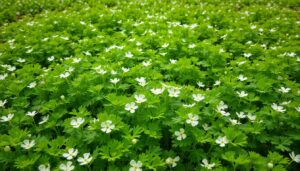
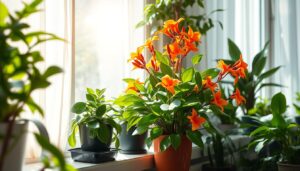
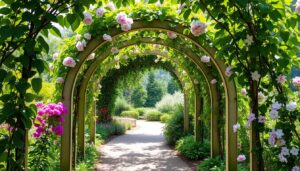
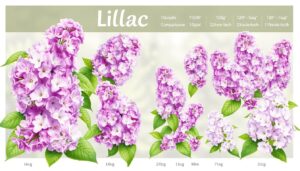
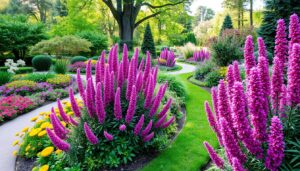
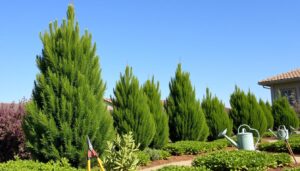
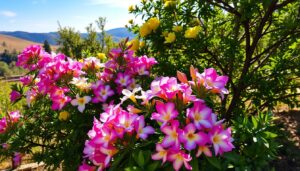


1 thought on “Portrait vs Landscape: Uncover the Best Orientation Choice”